




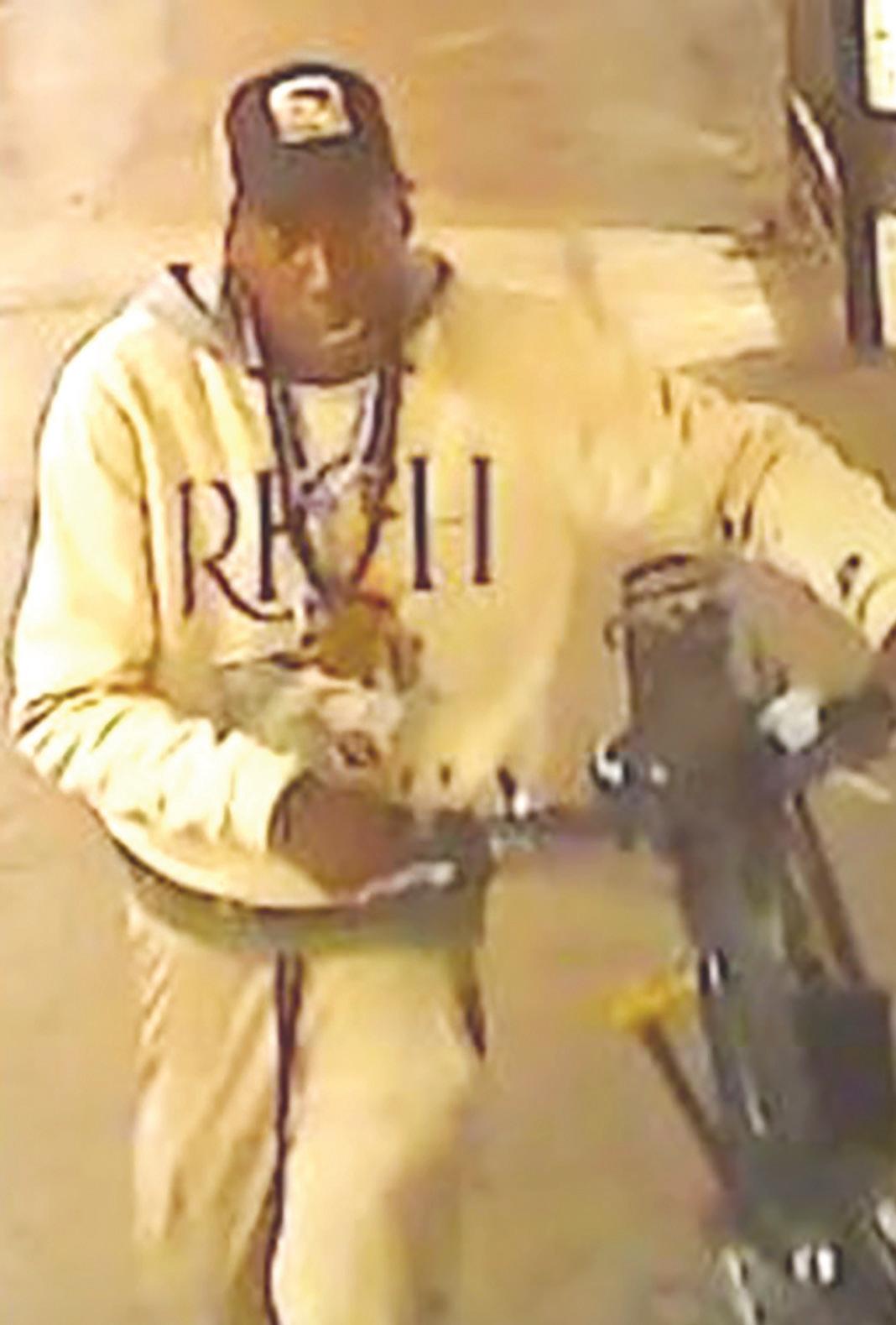


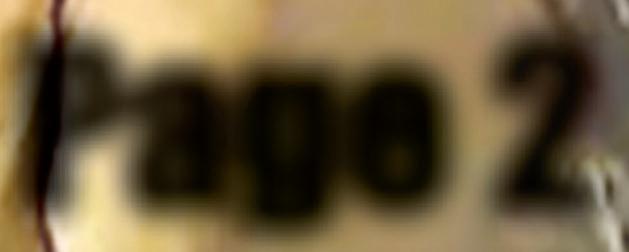



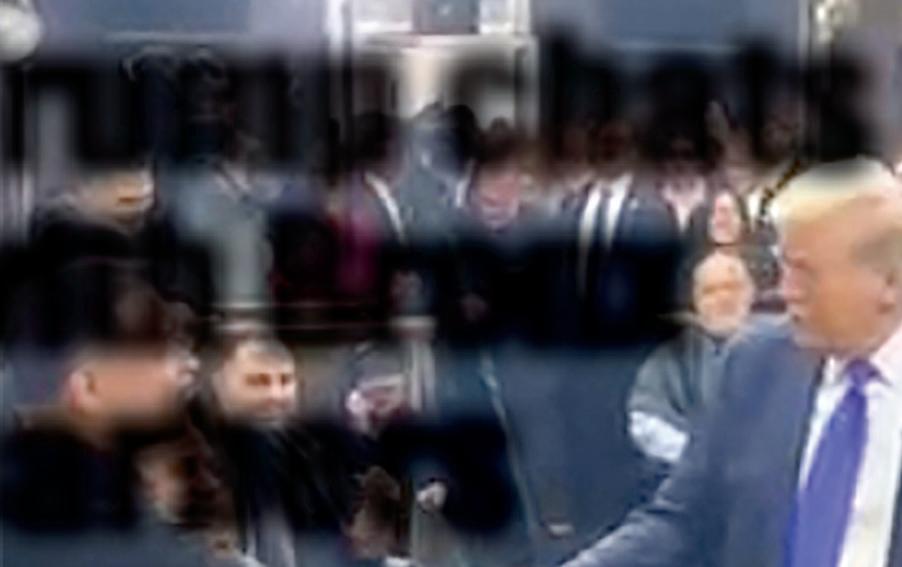


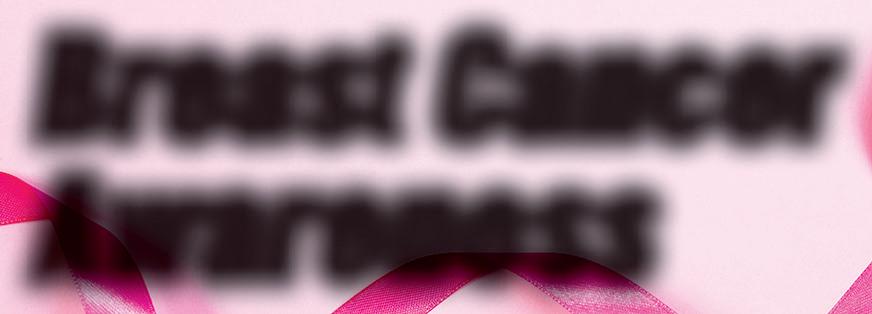
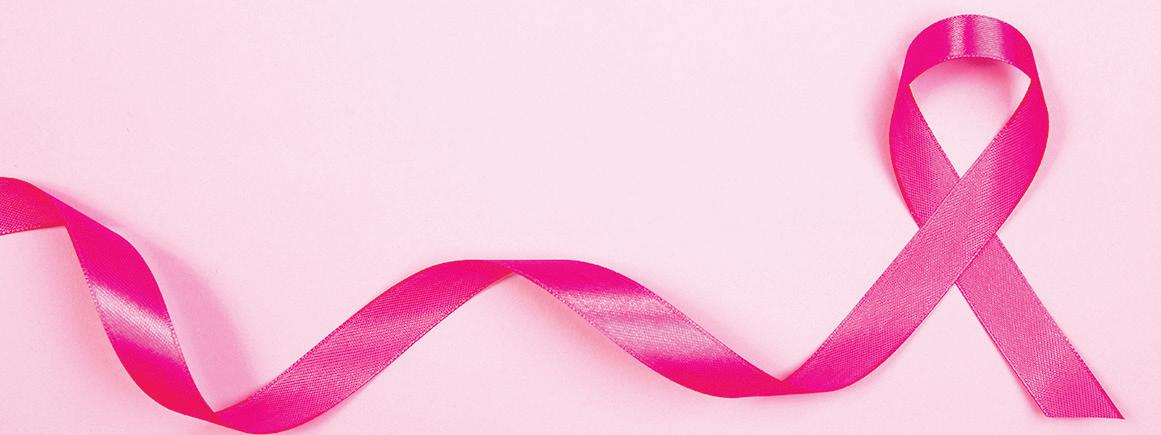





















By Dan Gesslein
A pair of batmen threatened to bash a Bronx subway rider’s brains in with a Louisville Slugger if he didn’t hand over his bike, cops said.
At around 4 am on October 14, a 30-year-old man was riding a northbound Number 6 train. As the train neared the Cypress Avenue station two men approached him.
Cops said one of the men held a baseball bat and threatened the straphanger to hand over his property.
The victim quickly emptied his pockets and handed over his property.
The batman’s accomplice yanked the bike away from the victim and the two got off at the next station.
The NYPD released surveillance video of the suspects walking off the train and heading to East 143rd
Street with the bike in tow.
Cops said the victim took himself to Lincoln Hospital out of precaution.
The first suspect is described as a male with a light complexion and a beard. He wore a dark hoodie.
The second suspect is described as a male with a dark complexion. He was last seen wearing a white sweatshirt with large lettering across the chest and a gray hoodie underneath. He also wore a black baseball cap and white pants.



The NYPD is searching for this man in connection with the robbery of a bike from a straphanger on the Number 6 train.
Anyone with information in regard to this incident is asked to call the NYPD's Crime Stoppers Hotline at 1-800577-TIPS (8477) or for Spanish, 1-888-57-PISTA (74782). The public can also submit their tips by logging onto the CrimeStoppers website at https:// crimestoppers.nypdonline.org/ or on Twitter @ NYPDTips.
All calls are strictly confidential.


By David Greene
Several teams of United States Secret Service sharpshooters were stationed on several rooftops as a small army of NYPD police officers and Emergency Service Unit personnel flooded the sidewalk and street as former president Donald Trump made an unscheduled visit to a Castle Hill barbershop—just days before the U.S. Presidential election.
Trump made the unexpected visit to the Knockout Barbershop, at 1189 Castle Hill Avenue on October 17.
One woman in the growing crowd was seen arguing with at least two Trump supporters, before more Trump supporters arrived, one carrying a flag. On one side-- an American flag, and on the other side was a Trump flag proclaiming, “Make America Great Again.”
Security was heightened exponentially since Trump appeared in Crotona Park on May 23 and two apparent assassination attempts in Butler, PA., on July 13 and at his golf course in West Palm Beach, FL., on September 15.
On this day the Secret Service protected the barbershop and the tent where some vehicles of Trump’s motorcade pulled into. Police flooded the streets, shops and sidewalks for blocks. Sharpshooters were on several rooftops, an NYPD helicop-
ter circled the area and several drones were observed over Castle Hill Avenue.
A crowd of more than two dozen journalists from around the city were set up behind metal barricades at the corner of Castle Hill Avenue and Gleason Avenue. A Secret Service agent with a bomb-sniffing K-9, asked if his dog could sniff their cameras and camera bags. They obliged.
Two journalists had waited for several hours hoping to get a soundbite or a photo of the former president, when one wondered if Trump would walk over and talk to the reporters, when one asked, “Will he do it?”
The second reporter responded, “They won’t let him, he’s a sitting target here.”
After his visit Trump jumped back into his vehicle parked inside the tent and left without waving to the crowd or talking to journalists.
Videos posted from inside


Knockout Barbershop to X showed Trump talking-to patrons and barbers inside the shop. For about an hour Trump held a mini-town hall with Fox and Friends host Lawrence Jones as he talked about small businesses and the economy.
Shortly after his visit there was a still-unconfirmed report of a person who had fallen or jumped from Trump Tower in Manhattan.
Also, today an independent review was released about the July 13 assassination attempt. In a statement by Secretary of Homeland Security Alejandro Mayorkas, he stated, “We will fully consider the Panel’s recommendations and are taking the actions needed to advance the Secret Service’s protection mission.”
Mayorkas continued, “These actions will be responsive not only to the
security failures that led to the July 13, 2024 assassination attempt, but, importantly, to what the Independent Review Panel describes as systematic and foundational issues that underline those failures.”
The Secret Service also issued a statement on the report, that read in part, “We are not waiting to act. We have already significantly improved our readiness, operational and organizational communications and implemented enhanced protective operations for the former president and other protectees.”
The statement continued, “This includes making changes to better integrate with our state and local law enforcement partners and augmenting our protection with support from the U.S. Department of Defense and other agencies.”


By David Greene
A homeless man seeking shelter at a 24hour check cashing business on East Fordham Road, started a fire in a trash bin, cops said. Firefighters were able to contain the blaze. At this time, it is not known if it was accidental or intentional.
The NYPD directed inquiries on the matter to the FDNY, while the FDNY did confirm they responded to a call of a “rubbish fire” at the CFSC Check
Cash business at 544 East Fordham Road at 5:05 a.m. on Sunday, October 20.
According to an unnamed FDNY official, the fire which was contained to
the trash bin, was brought under control and the “incident closed” at 5:46 a.m., there were no injuries and apparently no arson investigation is underway.
A woman behind the counter at CFSC stated that the man was homeless and often sought shelter inside the 24-hour business.


The woman said that the homeless man was smoking a cigarette and had asked her for money before the fire began. Asked if the man would


come back tomorrow, she replied, “We’ll call the police.”


By Sheldon Feldman, MD, chief, Breast Surgery & Surgical Oncology and director, Montefiore Einstein Comprehensive Cancer Center Breast Cancer Services
October is Breast Cancer Awareness Month, a time where people wear pink to acknowledge the fight against this disease, but also to remind us that every person, regardless of age, race or gender can be impacted by this cancer.
According to the American Cancer Society, in the United States, more than 300,000 new cases of invasive breast cancer will be diagnosed in women this year alone. The good news is that we know early detection of breast cancer saves lives.
In New York, we're fortunate to have access to worldclass healthcare facilities like Montefiore Einstein Com-

prehensive Cancer Center (MECCC). For Bronx residents, this means access to a comprehensive suite of services, ranging from detection to treatment, with locations in the Bronx and beyond.
In our community, the Bronx has higher breast cancer incidence and mortality rates than New York City overall, and disturbingly, we see a trend of Black women

being most likely to die from this disease often because their cancer is detected at later stages. That does not have to be the case. Each year, our research is advancing screening and treatment options and also trying to reduce side effects that might impact some populations more than others.
Regular mammograms are recommended for women over the age of 40, but it is essential for all women to be proactive about their breast health, especially if there’s a family history of breast cancer. For women whose mother or sister were diagnosed at an age before 50, screening should start 10 years prior to the date of diagnosis. For example, if a mother was diagnosed at age 40, screening should start at age 30.
A screening mammography for breast cancer is a critical step to detect cancer at earlier stages, which significantly improves the chances of successful treatment and avoiding breast removal. Early detection also reduces the need for aggressive treatments,

This article originally appeared NewYork Presbyterian Health Matters.
By Amanda Torres
Breast cancer is the second most common cancer among all women in the United States, with an estimated 300,000 new cases in 2024, according to the American Cancer Society (ACS). But the good news is that we have more tools than ever to help screen for breast cancer.

“Cases that we find early are treatable,” says Dr. Katja Pinker-Domenig, chief of the Division of Breast Imaging at NewYork-Presbyterian/Columbia University Irving Medical Center. “If somebody has a diagnosis of breast cancer, the sooner we can address the problem, the better.”
In April 2024, the U.S. Preventive Services Task Force updated its screening guidelines, recommending that women who are at average risk for breast cancer begin breast can-
cer screening at age 40. Also, the U.S. Food and Drug Administration (FDA) now requires mammogram centers in every state to notify patients if they have dense breast tissue. About half the women in the U.S. have high breast density, a risk factor for breast cancer that often requires supplemental testing.
“We are going into a more layered way of screening, tailoring it to the risk,” says Dr. Pinker-Domenig. “Not everybody who has extremely dense breast tissue has the same breast

cancer risk as somebody who has, for instance, a strong family history, which would put them in another risk level.”
Health Matters spoke with Dr. Pinker-Domenig about the different screening methods for breast cancer, including mammograms, ultrasounds, and MRIs, and when these different methods are recommended.
In the U.S., mammograms are the gold standard for breast cancer screening. What can


By Amanda Torres
Women diagnosed with early-stage breast cancer will likely have surgery as part of their treatment. Some patients may have a choice between breast-conservation surgery – also known as a lumpectomy – or removing the entire breast, a mastectomy. But the decision for what kind of surgery to get isn’t always simple. Factors that may impact their decision include fear of recurrence, ability to undergo radiation, and having a genetic predisposition for breast cancer.

For patients who have a breast cancer diagnosis, there can be a lot to consider in terms of choices for treatment,” says Dr. Arith Reyes, a surgeon specializing in breast cancer and benign breast diseases at NewYork-Presbyterian/Columbia University Irving Medical Center and NewYork-Pres-
byterian Westchester. “But the good news is that we have reliable studies that may help guide people in their decision-making process.”
A recent study in JAMA Oncology showed that people with early-stage cancer who were candidates for lumpectomy and mastectomy found that the survival rate
remained the same whether patients chose lumpectomy followed by radiation therapy, or mastectomy.
“This is important to understand because there has been a rise in patients with breast cancer who decide to get a double mastectomy when they have cancer in one
CONTINUED



CONTINUED FROM PAGE 7
they detect?
Dr. Pinker-Domenig: “Women at average risk for breast cancer are recommended to start with mammograms, which are a low-dose x-ray that looks at breast tissue. The machine has two plates that compress the breast to spread tissue apart before a picture is taken.
“In a mammogram, we are not only looking for masses but also details like asymmetries and microcalcifications that can indicate that something might be growing at that spot.”
There are different types of mammograms. In a regular mammogram, which is 2D, there can be overlapping tissue, and patients may get recalled because we are not sure if it is something of concern. Digital breast tomosynthesis, sometimes referred to as a 3D mammogram, is another type of mammogram that allows us to both lower recall rates and find more cancers.
The newest development is contrast-enhanced mammography, where we use a dye injected into the veins to help visualize cancers. It is a great option in women with greater than average risk and who have high breast density, where mammography or even tomosynthesis are limited. So, it is an exciting new addition to the screening toolbox that we have.
It’s also important to note that in the screening process, selfbreast exams are still valuable because you know your body. If you feel there is something different, I recommend having it checked.
When do people need supplemental screening, such as an ultrasound?
If there is a finding detected on a mammogram, a diagnostic breast ultrasound is often part of the work up. However, ultrasound can also be used for supplemental screening in women with dense breasts.
While ultrasound is helpful in finding more cancers, it can also generate more false positives. I sometimes get the question: Can I have an ultrasound instead of a mammogram? The answer is no because in ultrasounds, we cannot see microcalcifications, which are often the earliest form of breast cancer. An ultrasound alone is not an appropriate screening test. Who is recommended to get an MRI and how are they used for screening?
An MRI is undoubtedly the most sensitive test for breast cancer detection, regardless of risk factors, such as breast density. However, MRI is also the most expensive test. It is currently recommended for patients at high risk for breast cancer, such as those who have a 20% lifetime risk or more. The

standard screening for these high-risk women is an MRI plus a mammography because MRIs can also miss the early small cancers that we see as microcalcifications on the mammogram. Ultrasounds are not needed for patients getting a mammogram and MRI.
How does a breast MRI work?
A breast MRI is a machine that uses strong magnets and radio waves to create detailed pictures of the inside of your breast. Like in contrast enhanced mammography, in breast MRI we use a dye injected into the veins to highlight areas where a cancer is growing. Unlike mammograms, an MRI doesn’t use radiation and is completely painless. It involves lying still inside the scanner that looks like a tunnel. However, if you are claustrophobic and do not like closed spaces you may feel a little uncomfortable being inside.
In what scenarios would doctors do a biopsy?
A scenario where a biopsy is recommended is if there is anything suspicious for malignancy. I usually advise patients to not immediately think you have a cancer. We’re recommending a biopsy if the likelihood of malignancy is greater than 2% because we do not want to overlook something.
The initial biopsy is not a surgery. The radiologist uses imaging guidance and local anesthesia to take a small tissue sample to study it. During the biopsy, you will feel the radiologist doing something, but it is not painful. I personally compare it to the dentist. When we are done with the biopsy, we put a tiny clip marker at that area where we took the sample. This is important because if that comes back as benign, it will show whoever reads future mammograms that a biopsy has been done and that results were benign. In case you need surgery, this also helps with knowing exactly where to go, and the surgeon can be as tissue-sparing as possible. The marker doesn’t set off metal detectors, such as at the airport, and it is non-allergic.
What should people keep in mind about screening if they are going into it for the first time, or in general?
If it is the fi rst time you have ever had a screening exam, if you get recalled, do not immediately panic. Since we do not have an old image for comparison, we want to look at everything and document everything properly. So, if on a baseline exam you happen to have a recall, that doesn’t necessarily mean

that you have cancer. Patients should also be aware that we want to err on a side of caution and make sure that we catch cancers as early as possible. Almost everything that we fi nd early nowadays is treatable. That is why it is so important to have your screening mammogram.
Katja Pinker-Domenig, M.D. , is an attending radiologist at NewYork-Presbyterian/Columbia University Irving Medical Center. She is also a professor of radiology at Columbia University Vagelos College of Physicians and Surgeons and chief of the Division of Breast Imaging.
Dr. Pinker-Domenig , an i nternationally renowned physician-scientist and board-certified radiologist with expertise in breast imaging, has extensive expertise in all aspects of state-of-the-art breast imaging and interventions, including mammography, digital breast tomosynthesis, ultrasound, MRI, and biopsy procedures. Additional Resources Learn more about breast cancer screening at NewYork-Presbyterian: https://www.nyp.org/cancer/breast-cancer/screening-and-diagnosis

like radiation and chemotherapy, that often come with side effects, like damage to nearby healthy tissue.
Now in many of our mammogram suites, including at the Montefiore Einstein Breast Care Center at Waters Place, our mammograms come with remote controls so as the patient, you can play an active role in how much pressure you feel on your breast. A screening mammography can detect stage
0 breast cancer, also known as ductal carcinoma in situ (DCIS), which is where abnormal cells are found in the lining of the milk ducts but have not spread to nearby breast tissue. At this stage, there are more options for treatment, including plans that can avoid radiation and chemotherapy.
photon radiation therapy, proton therapy is a promising form of radiation treatment for men and women with left breast cancer. Through MECCC, we’re able to improve access to this novel therapy which spares the heart and lungs from radiation.

outcomes and reduced risk of side effects for people impacted by breast cancer, which is especially beneficial for Black women in particular who have a higher risk of certain side effects from traditional radiation therapy.
other cancers as well, including pediatric cancers, prostate cancer, head and neck cancer, and more.
Precise Treatment Preserves Quality
In addition to traditional treatment options such as surgery, chemotherapy and
At the New York Proton Center, which is located in Harlem and is the only proton beam facility in New York State, we’re able to precisely target cancer cells, and are seeing results like improved
We just celebrated the five-year anniversary of the center, and as a partner with Memorial Sloan Kettering Cancer Center, and Mount Sinai Health System, we’re advancing the research around proton therapy for
As we continue Breast Cancer Awareness Month, we encourage everyone to learn more about screening and treatment options for breast cancer. Our goal is to improve access to the best science has to offer and to do so in a way that puts our patients first. We’re confident that together we can reduce disparities in breast cancer.


breast,” says Dr. Reyes. Another study published in JAMA Surgery in 2017 found that one in five women diagnosed with breast cancer chose to undergo a second mastectomy to remove their healthy breast if they already had the other breast with cancer removed.
Over the years, researchers have been studying patients’ decision-making process when opting for more invasive surgery like mastectomy and have found factors that were significantly associated with their choice, such as greater worry about cancer recurrence. “While
there is no difference in survival, studies have found that there is a lower rate of recurrence of breast cancer in the other breast after double mastectomy, but the numbers are still low in all the groups,” says Dr. Reyes. “Overall, it is a matter of how much risk a patient is willing to take, and that is a personal choice.”
Health Matters spoke with Dr. Reyes, who shared what to know about breast-conserving surgery like lumpectomy, and scenarios when mastectomy might be the better option.
What is the difference between a lumpectomy and mastectomy?

A lumpectomy is a breast-conserving surgery that removes cancer and some normal tissue around it, but not the breast itself, so the shape of the breast is maintained. When you do lumpectomy for breast cancer, which is a good option for people with early-stage cancers, it almost always has to be followed by radiation therapy. There are rare circumstances where you don’t have to do radiation after a lumpectomy, such as if you are 65 and older and have a certain type of breast cancer, such as lymph node-negative invasive breast cancer.

In a mastectomy, one or both breasts are removed, and patients may opt for reconstruction. For people with early-stage breast cancer and who have mastectomy, radiation therapy is usually not needed but it is a case-bycase decision. It is important for patients to know that studies have shown no difference in survival if they chose
a lumpectomy with radiation or mastectomy. And that is something that we always bring up in discussing those two choices, is to explain that the length of time you live is the same, regardless of which you choose. The JAMA Oncology study followed over 600,000 patients – those who received lumpectomy versus mastectomy in one breast versus mastectomy in both.
Researchers found that the survival rate after 20 years was the same in all three groups. Are there instances where a mastectomy would be the better choice?
It is dependent on the stage of the breast cancer and the type of breast cancer. If they have a more aggressive breast cancer, like inflammatory breast cancer, then a mastectomy is strongly recommended. While this type of breast cancer is rare, it is arguably the most aggressive kind. In general, if the cancer is large, patients would undergo chemotherapy first so that the cancer could shrink before surgery. When cancer is in a large area, it becomes difficult to remove the tumors with good cosmetic results, which is when we recommend removing the whole breast. In addition, patients who have certain genetic
mutations, such as mutations to the BRCA1 and BRCA2 genes that predispose women to get breast cancer, are strong candidates for a double mastectomy.
How can understanding risk factors for breast cancer help patients make treatment choices if they are ultimately diagnosed? Genetic testing is something that we are doing more commonly now. Generally, I would not be recommending double mastectomy if patients do not have genetic mutations. What do these procedures entail and what does recovery tend to look like?
With lumpectomy, it is a same-day surgery, and the recovery is quick. Usually, they would have only one cut, unless it is two areas of the breast that has breast cancer, and they are still able to get two lumpectomies without deforming the breast.
For mastectomy, there is an option of no construction, just going flat, and then the option of doing reconstruction, which would be done by a plastic surgeon. And depending on the type of reconstruction, the recovery can be longer. But usually, I would say four weeks of

CONTINUED FROM PAGE 12 recovery for a mastectomy and for reconstruction at the time of the mastectomy.
For patients who opt for mastectomy, there are options for the type of surgery. “The extent of breast cancer and the shape of the breast determines which mastectomy we do,” says Dr. Reyes.
A patient is eligible for nipple-sparing mastectomy if the cancer is less than two centi-
meters away from the nipple. Says Dr. Reyes: “The advantage of nipple-sparing mastectomy is it has a better cosmetic outcome.”
Skin sparing and total mastectomy remove the nipple and areola, and more skin is removed in a total mastectomy.
One important point to keep in mind: “Patients need to know that regardless of which mastectomy, sensation is lost, so even with nipple-sparing mastectomy, they do not feel

the nipple and the skin. And there is higher risk of complications with mastectomy plus reconstruction than lumpectomy, such as surgical site infection,” says Dr. Reyes. How do you advise patients while they weigh their options?
There are patients where lumpectomy is not an option, but if they have choices for surgery, then I think it’s important to understand that studies have shown no differ-
ence in survival rate between a lumpectomy with radiation and mastectomy. It’s a matter of how much risk you’re willing to take, and that’s a personal choice. For patients who fear the chances of recurrence and they don’t want to go through that whole process again, they may opt for mastectomy. But the bottom line is that either of those two options will give them the same survival.
board-certified surgeon specializing in breast cancer and benign breast diseases at NewYork-Presbyterian/Columbia University Irving Medical Center and NewYork-Presbyterian Westchester. She is also an assistant professor of surgery at Columbia University Vagelos College of Physicians and Surgeons. Dr. Reyes performs all aspects of breast surgery, including breast conservation (lumpectomy), mastectomy, nipple-sparing mastectomy, and axillary lymph node procedures. ence
Arith Reyes, M.D., is a


By Mayor Eric Adams
Our mission as an administration has always been clear: making New York City affordable and keeping it the safest big city in America. We have been able to achieve this by being tough and smart on crime, both on our streets and in the subways.
Thanks to our efforts, New York City has seen nine straight months of crime reduction, and crime continues to trend downward in New York City. Overall index crime was down 3.1 percent in September, 3.3 percent for the third quarter,
and is down 2.0 percent year to date.
Homicides, burglary, grand larceny, and grand larceny auto are all down year to date. And in September, we also saw decreases in homicides, robberies, burglaries, grand larcenies, and


grand larceny autos.
Additionally, transit crime is also down year to date. It was down 8.7 percent in September, down 4.8 percent for this quarter, and is down 5.1 percent year to date.
We have achieved nine straight months of crime reduction through hard work and perseverance.
We have taken several important steps like removing more than 18,500 illegal guns from our neighborhoods, arresting violent criminals, and taking more than 70,000 illegal mopeds and ghost cars off our streets since the start of our administration.
We’ve closed more than 1,200 illegal smoke shops. And we have put more police on the streets and on our subways.
We are also tackling the root causes of crime by investing in upstream solutions, like education, affordable housing, after-school and holiday school programing, and early intervention.
One of our signature interventions is the “Partnership Assistance for Transit Homelessness,” or PATH, program. This initiative
brings together teams of trained nurses and outreach staff from the Department of Homeless Services, and NYC Health + Hospitals along with the NYPD transit police, who conduct co-response outreach overnight at subway stations across Manhattan.
Since PATH began on August 29th, less than two months ago, the teams have made contact with over 1,500 unhoused New Yorkers and delivered services to over 500 people. That is over 500 New Yorkers who received vital resources, like shelter, clothes, food, or medical attention because of our intensive efforts.
This is the compassionate thing to do, and we will be expanding the program in the months to come so we can reach even more New Yorkers in need.
To be clear: we are in no way saying those who are unhoused and in need of support are the primary source of crime on the subways or that they deserve to be in jail — because they don’t. But they don’t deserve to be ignored either. That is why our administration has
been focused on connecting unhoused New Yorkers to services for their safety and doing this work in a compassionate way.
The PATH program will supplement, not replace SCOUT, a successful co-response initiative we operate with the MTA to support people struggling with serious mental illness. It will also supplement our ongoing nightly End-Of-Line efforts and our entire Subway Safety Plan.
Just this past week, an MTA worker was violently assaulted at an end-of-line stop in Brooklyn. Fortunately, our officers were right there to apprehend the suspect. This illustrates why it is so important to continue our work and make sure we are able to proactively offer help to those who need it.
Being mayor of New York City means looking after the needs of all New Yorkers. And our entire team works tirelessly each day to achieve that vision and deliver results — keeping New York City the Safest Big City in America.
By Morris Gut

Diwali, the Hindu ‘Festival of Lights’, is a major holiday throughout India and the rest of the globe. It is a fine time to enjoy the vibrant flavors of India cuisine. It lasts 5 days, this year peaking on October 31st & November 1st, marked by rituals, parades, and plenty of good food. Here are some local spots to take in those exotic flavors. Dine in or take out.
Bharat Patel, pioneer proprietor of long running Tandoori Taste of India, will be marking Diwali with a grand buffet and specialties at lunch & dinner on Sunday, Nov. 3rd. Patel recently moved his restaurant into a new contemporized location along Westchester Ave., Port Chester. They are now offering a generous all-you-can-eat Indian Buffet on Saturdays and Sundays. The same management team owns and operates Indi Q in Armonk. The dining room and bar area are separated. Light grey walls are highlighted by modern industrial fixtures, lighting, and colorful Indian artifacts.
At a recent sitting, we enjoyed a dramatically presented Stuffed Dosa with masala spiced potatoes, served with coconut chutney and sambar. An order of Chicken Curry was an herbal delight. The marinated Salmon cooked in the tandoor oven was juicy and
delicious. Tandoori Taste of India, 223 Westchester Ave., Port Chester. Just up the street from the Capitol Theatre concert hall. Closed Tuesdays. 914-937-2727. www.tandooritasteofindia.com
ADDITIONAL INDIAN VENUES TO CONSIDER
Mumbai Katta, 227 Westchester Ave., Port Chester. 516-953-3265 Anita and Jayant Gawde have opened a vibrant ode to flavorful regional Indian street food. They will mark the traditional 5 day festival Diwali from Thursday, Oct. 31st. to Nov. 4th. www.mumbaikatta.com
Marigold Cuisine, 434 White Plains Road, Eastchester. 914202-9455 Michelin recognized chef Hermant Mathur, who was personal chef to the Prime Minister of India, offers a creative modern take on India cuisine. www.ordermarigoldrestaurant. com
Tandoori Place, 2146 Starling Ave., Bronx. 347-903-6440 Halal and vegan options. www.tandooriplacebronx.com
Cumin Indian Restaurant, 3549 Johnson Ave., Bronx. 718-4322484 www.cuminindianrestaurantbronx.com
Riverdale Indian Grill, 5225 Broadway, Bronx. 718-825-3030
Indian regional classics. www. riverdaleindiangrillbronx.com
Khalil Biryani House, 1457 Unionport Road, Bronx. 646763-5073 www.khalilsfood.com
Coromandel Cuisine of India, 464 North Ave., New Rochelle.


914-235-8390 The best Indian take-out in the Queen City. You may remember them from their former Division St. location. www.coromandeltogo.com
Coriander-Modern Indian, 154 Larchmont Ave., Larchmont. 914-235-1306 Proprietor Shawn Nagpal and his team offer a modern touch to their regional Indian cuisine. www.corianderny.com
Chutney Masala, 76 Main St., Irvington. 914-591-5500 Chef Navjot Arora runs a creative kitchen as recognized by the Michelin Restaurant Guide. www. chutneymasala.com
Spice Village, 8 Columbus Ave., Tuckahoe. 914-562-9466
Serving the public in southern Westchester for years. Try the lamb chops. www.spicevillageny.com
Mughal Palace, 16 Broadway, Valhalla. 914-997-6090 Alam and staff are consistently accommodating. www.mughalpalace. com
RaaSa Fine Indian Cuisine, 145 E. Main St., Elmsford. 914-3477890 A solid kitchen and front of the house team recognized by the Michelin Restaurant Guide. www.raasany.com
Ambadi Kebab & Grill, 141 E. Post Road, White Plains. 914686-2014 Indian and halal cuisine by the owner of Mughal Palace. www.ambadiusa.com
Indi Q Indian Bistro & BBQ, 61 Old Route 22, Armonk. 914273-5931 Lovely setting operated by the owners of Tandoori. www.indiqarmonk.com


Royal Palace, 77 Knollwood Road, Hartsdale/White Plains. 914-289-1988 Owner Jagdish Mitter has been operating this sprawling Indian eatery for over 20 years. www.royalpalacecuisines.com
Neha Palace, 27 Meyer Ave., Yonkers at Cross County Shopping Center. 914-476-5900 Elegant spot serving Halal cuisine. www.nehapalaceyonkers.com
NH44 Indian, 219 E. Hartsdale Ave., Hartsdale. 914-574-5262
Jeevan Pullan and Rashan Balan named their restaurant after the longest highway in India. Indian specialties with aplomb. www. nh44indian.com
Jaipore Royal Indian Cuisine, 280 Route 22, Brewster. 845277-3549 A lot of local history coming out of this historic mansion. www.jaiporenyc.com
FALL HUDSON VALLEY
RESTAURANT WEEKS, OCT. 28-NOV. 10!
This popular dining out promotion, originally created and sponsored by The Valley Table Magazine, will include approximately 140 restaurants, past participants and some new from all over the Hudson Valley. Patrons are always anxious to cash in on the seasonal bounty at reasonable prices. There are added price options this year. Restaurants are expected to offer prix fixe luncheons for $24.95 or $39.95, and 3-course dinners for $29.95 or $44.95. Beverage, tax & tip are not included. Dine-in or take-out (in some cases). For additional information and an up-to-date list of participating restaurants go to: https://valleytable.com/restaurant-week/ (Morris Gut is a restaurant marketing consultant and former restaurant trade magazine editor. He has been tracking and writing about the food and dining scene in the Bronx and Westchester for 30 years. He may be reached at: 914-235-6591. Email: gutreactions@optonline.net)
